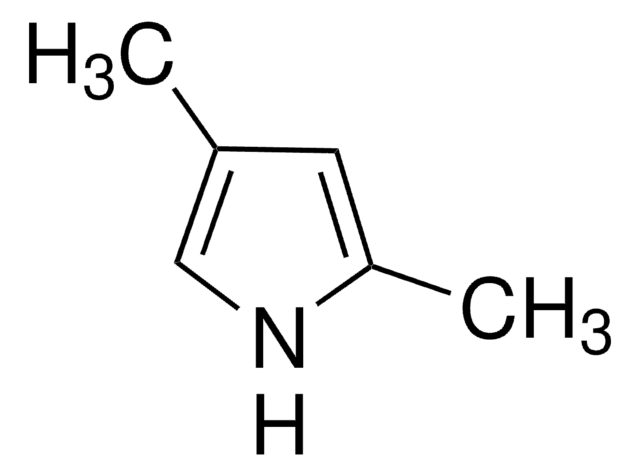M6762
1-méthyl-2-pyrrolidinone
Synonyme(s) :
1-méthyl-2-pyrrolidone, N-méthyl-2-pyrrolidone, M-PYROL, NMP
About This Item
Produits recommandés
Densité de vapeur
3.4 (vs air)
Pression de vapeur
0.29 mmHg ( 20 °C)
0.99 mmHg ( 40 °C)
Température d'inflammation spontanée
518 °F
Limite d'explosivité
9.5 %
Indice de réfraction
n20/D 1.47 (lit.)
Point d'ébullition
202 °C (lit.)
81-82 °C/10 mmHg (lit.)
Pf
−24 °C (lit.)
Solubilité
ethanol: miscible 0.1 mL/mL, clear, colorless (10%, v/v)
H2O: miscible
acetone: miscible
benzene: miscible
chloroform: miscible
diethyl ether: miscible
ethyl acetate: miscible
Densité
1.028 g/mL at 25 °C (lit.)
Température de stockage
2-8°C
Chaîne SMILES
CN1CCCC1=O
InChI
1S/C5H9NO/c1-6-4-2-3-5(6)7/h2-4H2,1H3
Clé InChI
SECXISVLQFMRJM-UHFFFAOYSA-N
Vous recherchez des produits similaires ? Visite Guide de comparaison des produits
Autres remarques
Informations légales
Mention d'avertissement
Danger
Mentions de danger
Conseils de prudence
Classification des risques
Eye Irrit. 2 - Repr. 1B - Skin Irrit. 2 - STOT SE 3
Organes cibles
Respiratory system
Code de la classe de stockage
6.1C - Combustible acute toxic Cat.3 / toxic compounds or compounds which causing chronic effects
Classe de danger pour l'eau (WGK)
WGK 1
Point d'éclair (°F)
195.8 °F - Pensky-Martens closed cup
Point d'éclair (°C)
91 °C - Pensky-Martens closed cup
Équipement de protection individuelle
Eyeshields, Gloves, type ABEK (EN14387) respirator filter
Certificats d'analyse (COA)
Recherchez un Certificats d'analyse (COA) en saisissant le numéro de lot du produit. Les numéros de lot figurent sur l'étiquette du produit après les mots "Lot" ou "Batch".
Déjà en possession de ce produit ?
Retrouvez la documentation relative aux produits que vous avez récemment achetés dans la Bibliothèque de documents.
Notre équipe de scientifiques dispose d'une expérience dans tous les secteurs de la recherche, notamment en sciences de la vie, science des matériaux, synthèse chimique, chromatographie, analyse et dans de nombreux autres domaines..
Contacter notre Service technique







